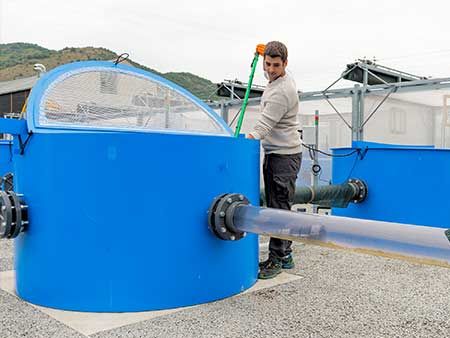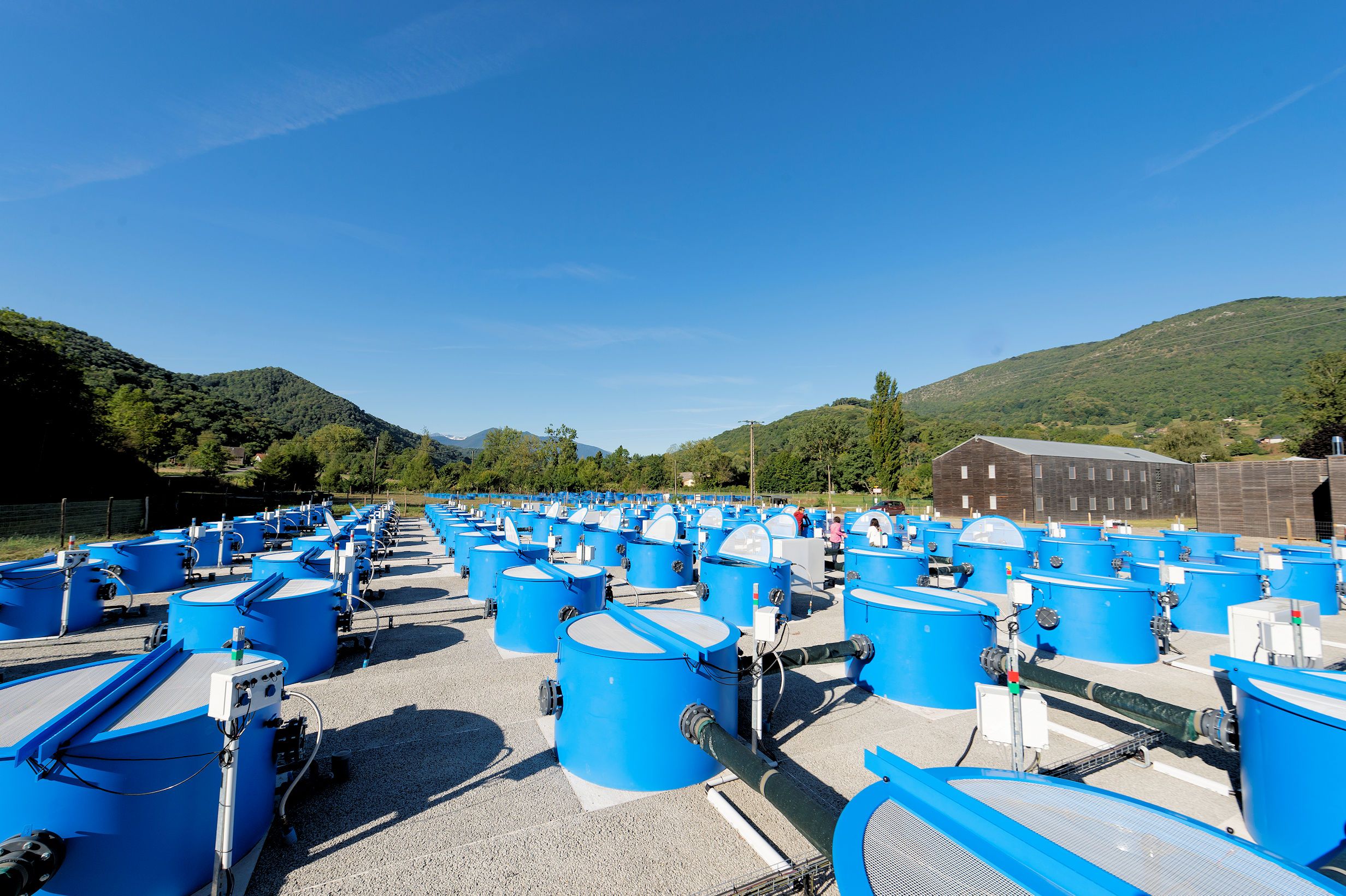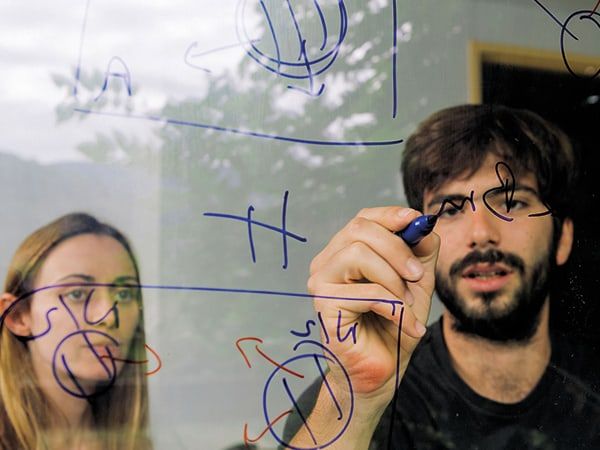LINKING
Research Themes
Biodiversity and ecosystem functioning across scales

One of the main current challenges of biodiversity science is to understand and predict how biodiversity changes will affect ecosystem functioning and the delivery of ecosystem services on which humans depend directly or indirectly, such as biomass production, water purification, erosion control, pollination, and pest and disease control.
We address this issue theoretically using dynamical ecosystem models to understand the mechanisms through which biodiversity affects ecosystem functioning and predict its impacts on ecosystem services (Michel Loreau, Claire de Mazancourt, Jose Montoya, Bart Haegeman). In particular, we develop new theory to scale up local biodiversity-ecosystem functioning relationships to larger spatial scales and to natural conditions under which biodiversity is not controlled experimentally (Michel Loreau, Claire de Mazancourt), and new theory on the importance of biodiversity for ecosystem functioning as environmental variation changes (Bart Haegeman, Jose Montoya). We also use models to analyse synergies and trade-offs between multiple ecosystem services, in particular crop production, crop pollination and biological control in agricultural landscapes (Michel Loreau, Claire de Mazancourt). In parallel, we test these mechanisms by performing experiments on various ecosystem types (plant and soil communities, pelagic ecosystems, river communities) in which we manipulate different dimensions of biodiversity (Simon Blanchet, Jose Montoya). While we mostly focus on changes in species diversity within one trophic level, we expand our focus in two directions:
(1) by testing whether intraspecific diversity is an important determinant of the functioning of ecosystems in mesocosms and in complex natural landscapes (Simon Blanchet, ANR and Tulip); and
(2) by manipulating species richness in competitive communities (Jose Montoya) and across multiple trophic levels, which are either antagonistic (predator-prey systems, Jose Montoya) or mutualistic (plant-symbiont systems, Grégoire Freschet, SYNERSYS Tulip Grant).
In addition to manipulations of biodiversity per se, we investigate, both theoretically and experimentally, the environmental conditions associated to global change under which biodiversity becomes more important for ecosystem functioning; e.g., increased climatic variability associated with climate change (Simon Blanchet, Montoya), stressful regimes (drought, nutrient limitation) associated to climate and land-use changes (Grégoire Freschet).
Biodiversity and ecosystem stability across scales
One critical aspect of ecosystem functioning is its stability. Ecological stability is key to both the maintenance of biodiversity and the sustainability of human societies as fluctuations of ecosystem services often have detrimental effects.
We are developing a whole body of new theory to define and understand the various dimensions of ecological stability and to understand and predict how ecosystem stability and its relationship with biodiversity change across multiple spatial scales. In particular, we seek to establish connections between different empirical and theoretical stability measures, and we are building new theory on the stability of food webs and on the stability of metacommunities at multiple spatial scales using invariability as an empirically relevant measure of stability (Michel Loreau, BIOSTASES ERC Grant, Claire de Mazancourt, Bart Haegeman).In addition, we develop new theory on the impacts of changing network structure on different facets of ecosystem stability, with a strong emphasis on the effects associated to habitat changes (loss and fragmentation) (Jose Montoya).

Climate change impacts on biodiversity and ecosystems

More than two decades have passed since it became clear that anthropogenic warming was driving observed changes in wild species. The LINKING team aims at gaining a comprehensive and coherent view of the effects of climate change on biodiversity across levels of organization (i.e., from individuals to ecosystems), temporal scales (i.e., from ecological to evolutionary timescales), and spatial extents (i.e., from semi-natural mesocosms to geographic range shifts in the wild) (Camille Parmesan MOPGA grant, IPCC/GEIC). In parallel, the team develops new theory on the combined effects of climate change and other global change stressors. A strong focus is on the interactive effects of warming and habitat fragmentation on biodiversity, community dynamics and ecosystem functioning. Such theoretical developments will be tested experimentally in controlled laboratory conditions and on semi-natural aquatic mesocosm experiments (Jose Montoya, FRAGCLIM ERC Grant, Simon Blanchet).
We also seek to improve understanding and future projections of responses to climate change in the phenology and geographic range of wild species. We link impacts of climatic trends and extreme climatic events on ecological, evolutionary and behavioural processes at the population level to patterns of biodiversity changes at the global level. Two new areas focus our attention:
(1) climate change impacts of societal importance, such as changes in human disease risk as a consequence of range shifts of disease organisms, their wild vectors and reservoirs; and(2) climate change impacts in high-risk habitats, by assessing climate change risks for species inhabiting montane and boreal regions, two understudied but vulnerable systems (Camille Parmesan).
Long-term dynamics and sustainability of human-nature interactions
Linking biodiversity, ecosystems and people ultimately requires understanding and predicting the long-term dynamics of the coupled social-ecological systems that result from human-nature interactions. We develop novel models that include human-nature feedbacks together with changes in human behaviour to investigate the long-term dynamics and sustainability of coupled social-ecological systems and their ability to keep providing ecosystem services to a growing human population.
A key focus of our current work is on the spatial dynamics of coupled social-ecological systems that are connected by trade, species dispersal and human dispersal as our preliminary work suggests that spatial movements can strongly affect the sustainability of these systems (Michel Loreau).


